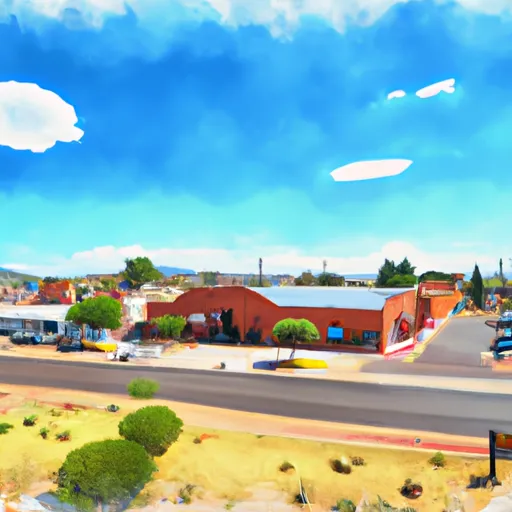-
 Snoflo Premium
Snoflo Premium
Get unlimited access to all our content
With no Ad interruptions! - Start Your Free Trial Login with existing account
Cibola
Eden Index
Climate
6.9
•
Recreation
5.2
•
Community
•
Safeguard
4.6/10

Cibola, Arizona is located in the southwestern United States and has a hot desert climate with low humidity. The area receives very little rainfall, with an average of 1-2 inches per year, and is prone to dust storms. The hydrology of the region is characterized by the Colorado River, which borders the town to the west. Cibola offers outdoor recreation opportunities such as hiking, camping, and fishing on the river. The town is also home to the Cibola National Wildlife Refuge, which protects endangered species and offers visitors the chance to view a variety of wildlife. Overall, Cibola is a unique desert town with abundant outdoor recreation opportunities despite its harsh climate.
What is the Eden Index?
The Snoflo Eden Index serves as a comprehensive rating system for regions, evaluating their desirability through a holistic assessment of climate health, outdoor recreation opportunities, and natural disaster risk, acknowledging the profound impact of these factors on livability and well-being.
Climate Health Indicator (CHI): 6.9
Cibola receives approximately
105mm of rain per year,
with humidity levels near 74%
and air temperatures averaging around
23°C.
Cibola has a plant hardyness factor of
9, meaning
plants and agriculture in this region tend to thrive here all year round.
By considering the ideal temperature range, reliable water supplies, clean air, and stable seasonal rain or snowpacks, the Climate Health Indicator (CHI) underscores the significance of a healthy climate as the foundation for quality living.
A healthy climate is paramount for ensuring a high quality of life and livability in a region, fostering both physical well-being and environmental harmony. This can be characterized by ideal temperatures, reliable access to water supplies, clean air, and consistent seasonal rain or snowpacks.
Weather Forecast
Streamflow Conditions
Lower Colorado
Area Rivers
Lower Colorado
Snowpack Depths
Lower Colorado
Reservoir Storage Capacity
Lower Colorado
Groundwater Levels
Recreational Opportunity Index (ROI): 5.2
The Recreational Opportunity Index (ROI) recognizes the value of outdoor recreational options, such as parks, hiking trails, camping sites, and fishing spots, while acknowledging that climate plays a pivotal role in ensuring the comfort and consistency of these experiences.
Access to outdoor recreational opportunities, encompassing activities such as parks, hiking, camping, and fishing, is crucial for overall well-being, and the climate plays a pivotal role in enabling and enhancing these experiences, ensuring that individuals can engage in nature-based activities comfortably and consistently.
Camping Areas
| Campground | Campsites | Reservations | Toilets | Showers | Elevation |
|---|---|---|---|---|---|
| Squaw Lake | 125 | 183 ft | |||
| Oxbow | None | 241 ft | |||
| Ogilby Rd Dispersed | None | 359 ft | |||
| Mittry Lake Dispersed | None | 183 ft | |||
| Coon Hollow Dispersed LTVA - Mule Mountain | None | 657 ft | |||
| Wiley Wells Dispersed - Mule Mountain | 14 | 576 ft | |||
| Imperial Dam Long Term | None | 282 ft | |||
| Lake Martinez Military | None | 196 ft | |||
| Picacho State Rec Area | 58 | 265 ft | |||
| Palo Verde County Park | 25 | 236 ft |
Nearby Fishing
Nearby Ski Areas
Catastrophe Safeguard Index (CSI):
The Catastrophe Safeguard Index (CSI) recognizes that natural disaster risk, encompassing floods, fires, hurricanes, and tornadoes, can drastically affect safety and the overall appeal of an area.
The level of natural disaster risk in a region significantly affects safety and the overall livability, with climate change amplifying these risks by potentially increasing the frequency and intensity of events like floods, fires, hurricanes, and tornadoes, thereby posing substantial challenges to community resilience and well-being.
Community Resilience Indicator (CRI):
The Community Resilience Indicator (CRI) recognizes that education, healthcare, and socioeconomics are crucial to the well-being of a region. The CRI acknowledges the profound impact of these elements on residents' overall quality of life. By evaluating educational resources, healthcare accessibility, and economic inclusivity, the index captures the essential aspects that contribute to a thriving community, fostering resident satisfaction, equity, and social cohesion.

